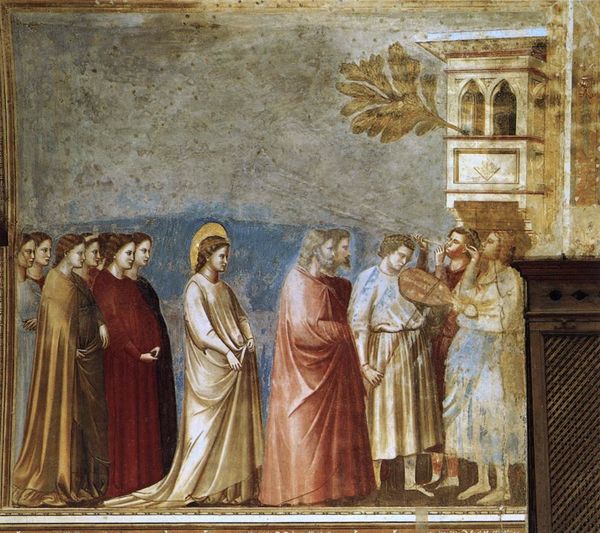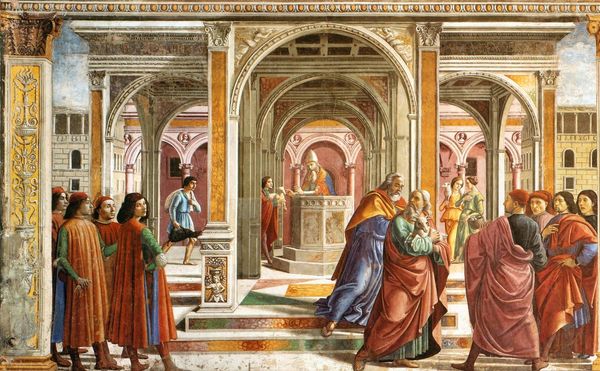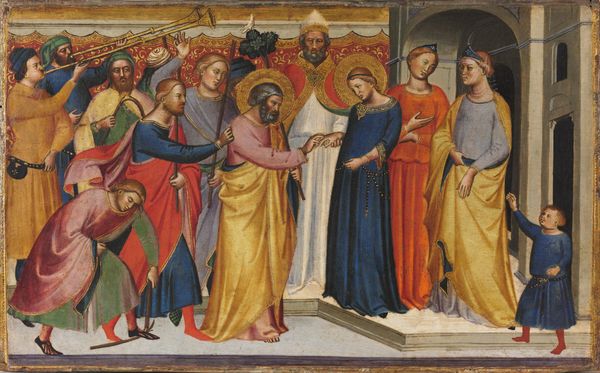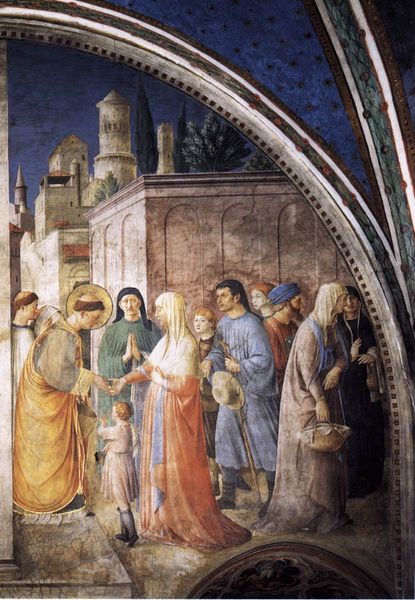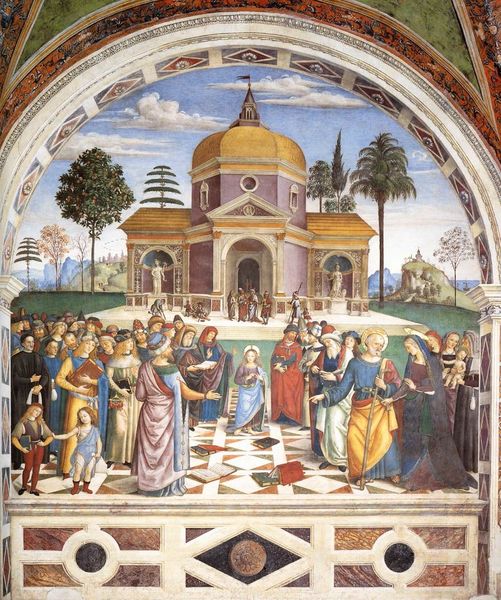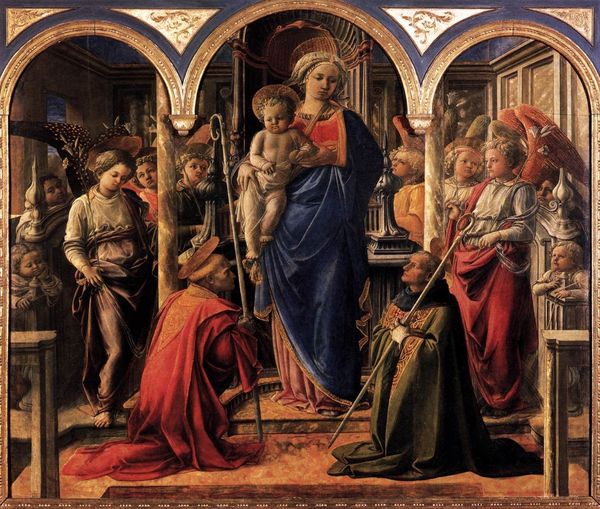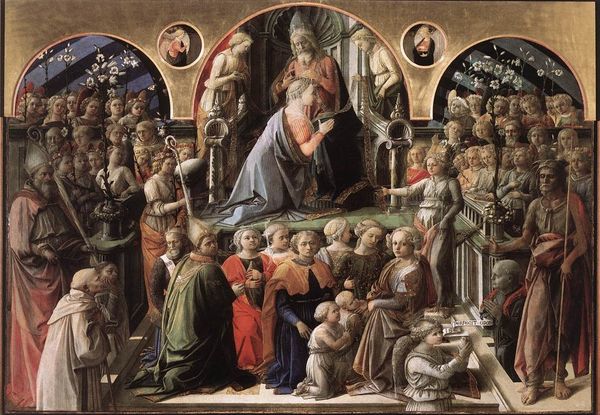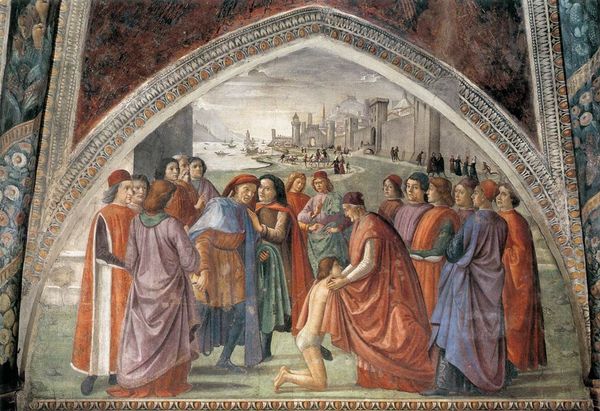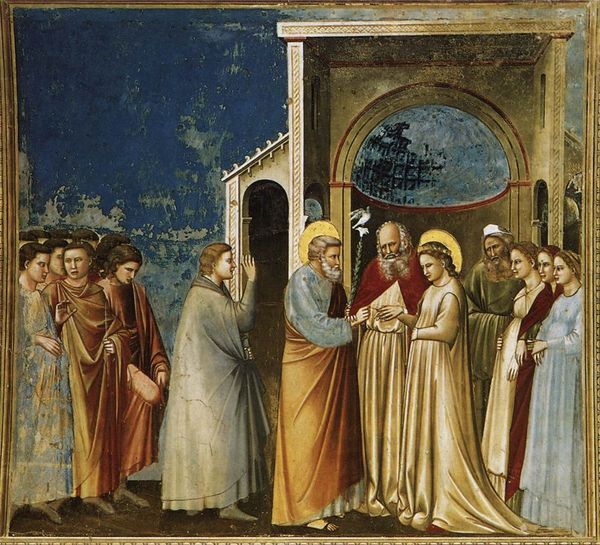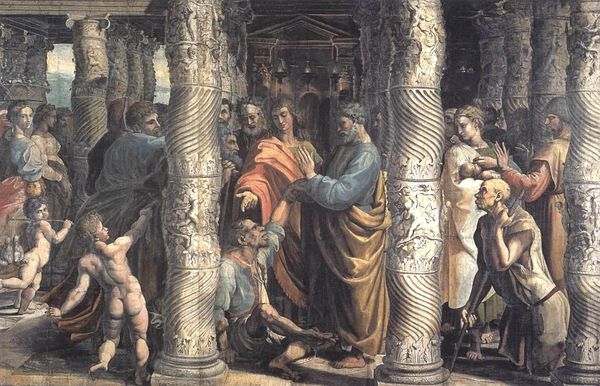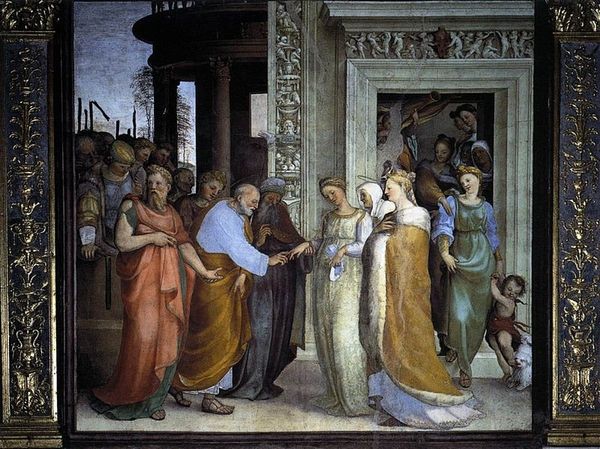
tempera, painting, fresco
#
portrait
#
high-renaissance
#
narrative-art
#
tempera
#
painting
#
perspective
#
figuration
#
historic architecture
#
fresco
#
group-portraits
#
christianity
#
history-painting
#
italian-renaissance
#
virgin-mary
#
historical building
#
christ
Copyright: Public domain
Curator: Ah, here we are, standing before Domenico Ghirlandaio's "Marriage of Mary," a tempera and fresco piece painted around 1490. It resides, of course, in Santa Maria Novella in Florence. Editor: It strikes me as so orderly. Everyone's posed, as if aware they're part of something greater than themselves. Is that architectural setting as idealized as it seems? Curator: Ghirlandaio loved to integrate the architecture of the Renaissance into his frescoes. And that is very typical of him, he wasn't afraid to also include the wealthy patrons in a religious subject! What do you mean by idealized though? Editor: The materials feel smoothed over, sanitized—the actual labour of quarrying the stone, mixing the pigment—I'd like to get closer to that physicality. Look at that gold trim! Who produced this and how much did it cost to glorify? It’s lovely, I suppose, but detached. Curator: But isn't that detachment a feature of the time? The aspiration towards a higher, more divine reality? The way light falls, the graceful figures, don't you feel that pulling you upward? I find beauty and grace, and a fascinating portrayal of Mary's humanity in her hesitant gesture of offering the ring. Editor: Perhaps. Though to me the architecture speaks louder, practically swallowing the figures whole. This work to me says more about Florence than faith—the wealth, the patronage…all built on the backs of labourers rendered invisible by this… this radiant sheen. Curator: And yet that sheen, that calculated artistry, provides us a window into their world. Consider the colours: azurite, ochre…expensive pigments wielded to convey a particular vision. It’s a conversation between labour and devotion, not a silencing of one by the other. What’s especially amazing is the inclusion of figures in contemporary Florentine dress. These weren't just biblical figures; they were the people of Florence. Editor: I suppose that in rendering them both together he elevated them and their materials. The message of the fresco certainly lingers. I’ll give you that much. Curator: I feel we only scratched the surface here today, but perhaps it's that mystery that keeps drawing me in. The eternal pull between what we build and what we believe.
Comments
No comments
Be the first to comment and join the conversation on the ultimate creative platform.

